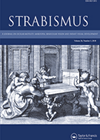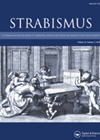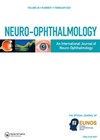
Journal Reviews
Prevalence and related factors for strabismus and amblyopia in Africa
The aim of this study was to overview the literature in relation to strabismus and amblyopia and associated risk factors in Africa. The review included 24 papers; eight for strabismus and 21 for amblyopia. Sample sizes ranged from 352 to...
Surgical management and review of congenital inferior rectus dysgenesis
Three cases are presented of congenital inferior rectus (IR) dysgenesis causing hypertropia. Case 1 was a two-year-old female with intermittent vertical strabismus of 20PD and -2 limitation on depression, worse in abduction. MRI imaging showed a hypoplastic IR. Following surgery,...
Characteristics of age-related distance esotropia
The primary aim of this study was to describe clinical characteristics and natural history of age-related distance esotropia (ARDET) within an adult cohort over a 20-year period. This was a retrospective review of 73 patients from 751 with adult onset...
Review of bupivacaine use in treatment of strabismus
This review aimed to assess the applications of bupivacaine (B) in the non-surgical treatment of strabismus in human and animal studies. Animal studies show that singly-innervated fibres with low concentrations of mitochondria and developed sarcoplasmic reticulum are more affected by...
Case report review of children with septo-optic dysplasia and optic nerve hypoplasia
Septo-optic dysplasia (SOD) and optic nerve hypoplasia (ONH) cause congenital visual impairment. Their aetiology is mostly unknown. The authors aim was to investigate the prevalence of specified ophthalmological features in patients with these disorders. These features included impaired visual acuity,...
Treatment of amblyopia by Ghanaian optometrists
In Ghana, optometrists are the primary eyecare professional as a first contact for many patients with amblyopia. This study evaluated practice patterns in the management of amblyopia by optometrists in Ghana. The authors conducted a cross-sectional online survey aimed at...
Literature review on the use of bupivacaine for strabismus management
The purpose of this study was to examine the overall efficacy of bupivacaine (BPX) when used in isolation for the treatment of strabismus. This was a literature review from 1980 to 2021. The search identified 196 papers of which eight...
Complications of limbal stay sutures
There is limited literature describing complications at the limbal suture site. The authors describe two cases with postoperative complications due to use of intraoperative limbal stay sutures. Each case had strabismus surgery at other centres but with presentation to the...
Factors associated with seeking delayed strabismus surgery
The purpose of this study was to investigate the main reasons for delay in strabismus surgery and assess patients’ motivations to undergo strabismus surgery in adulthood. This was a prospective study in the Republic of Moldova of 91 patients with...
OCT findings after strabismus surgery for macular, choroidal and nerve fibre thickness
This study used OCT to investigate the changes in the central macular thickness, subfoveal choroidal thickness (SFCT) and retinal nerve fibre layer (RNFL) after horizontal rectus surgery for patients with strabismus. This was a retrospective study and patients were grouped...
Corneal dellen following strabismus surgery
This study aimed to evaluate the frequency of corneal dellen (CD) development, the healing process and associated factors that affect the development and healing of CD formation after strabismus surgery. This study retrospectively reviewed 1264 eyes of 714 patients from...
Detection of SO tendon abnormality versus atrophy
This study aimed to evaluate patterns of binocular misalignment in primary gaze, lateral and vertical gaze, and head tilt in patients showing head-tilt dependent hypertropia associated with discontinued superior oblique (SO) tendon but without SO muscle atrophy, versus patients with...







